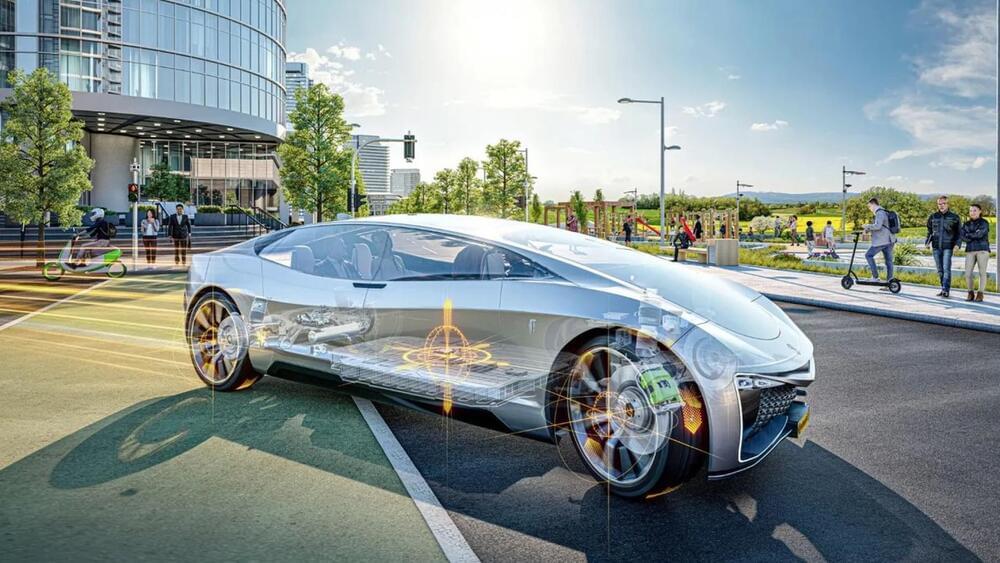Many AI experts believe there is a chance human-level artificial intelligence will arrive within the next decades—some believe it will exist much sooner.




University of Southern California and the Cleveland Clinic Florida Research and Innovation Center researchers have published new research on GRP78, a protein implicated in both COVID-19.
First identified in 2019 in Wuhan, China, COVID-19, or Coronavirus disease 2019, (which was originally called “2019 novel coronavirus” or 2019-nCoV) is an infectious disease caused by severe acute respiratory syndrome coronavirus 2 (SARS-CoV-2). It has spread globally, resulting in the 2019–22 coronavirus pandemic.

Scientists are getting closer to producing prosthetic limbs that can sense touch. A team of researchers from Stanford University and Seoul National University have created an artificial nerve system that can not only sense differences in pressure but also read individual Braille letters. More amazingly still, they managed to hook the artificial nerves up to the leg of a cockroach and make the limb twitch.
“We take skin for granted but it’s a complex sensing, signaling and decision-making system,” says Stanford’s Zhenan Bao, co-author of the paper published in Science and whose lab has been developing the system, in a statement. “This artificial sensory nerve system is a step toward making skin-like sensory neural networks for all sorts of applications.”
The nerve circuit that the team developed is made up of three main components.
Transhumanism advocates the use of current and emerging technologies such as genetic engineering, artificial intelligence, and nanotechnology, to augment human capabilities, enhance longevity, and improve cognition. The term “designer baby” refers to a child who would develop from an embryo or sperm or egg that had been genetically altered. Is there a covert political agenda behind this allegedly altruistic scientific movement?
Robert Sepehr is an anthropologist and author.
(books also available through other book outlets)
http://amazon.com/Robert-Sepehr/e/B00XTAB1YC/
Robert Sepehr Links.
https://linktr.ee/RobertSepehr.
Support Robert Sepehr on Patreon:
https://www.patreon.com/AtlanteanGardens


Researchers from Spain and Denmark have discovered a technique for attacking cancer cells in the production of one of the origin-of-life molecules.
The molecule that gave rise to life, RNA
Ribonucleic acid (RNA) is a polymeric molecule similar to DNA that is essential in various biological roles in coding, decoding, regulation and expression of genes. Both are nucleic acids, but unlike DNA, RNA is single-stranded. An RNA strand has a backbone made of alternating sugar (ribose) and phosphate groups. Attached to each sugar is one of four bases—adenine (A), uracil (U), cytosine ©, or guanine (G). Different types of RNA exist in the cell: messenger RNA (mRNA), ribosomal RNA (rRNA), and transfer RNA (tRNA).

The carbon-negative concrete blocks absorb more CO2 during production than they emit.
A Limburg (Netherlands) company called Masterbloc has engineered an eco-friendly building material from steel slag left over from the steel industry, according to an article by The Brussels Times.
The company CEO Bjorn Gubbels claims the block stores CO2 and can help boost the circular economy.
CHUNYIP WONG/iStock.
Masterbloc’s product is CO-2 negative, with more CO2 absorbed during production than emitted. At the company’s factory, some 8-tonnes of CO2-ingesting building blocks are produced per day. This roughly accounts for a yearly output of 15,000 tonnes.

Martin Baechle, Head of System Development Future Brake Systems, on why its new system is a “gamechanger”.
Continental has taken “significant” orders for its Future Braking System It claims this will change the way we think about braking systems forever.
The ultimate aim is “vision zero” — no traffic fatalities, injuries, or crashes.
This story first appeared in our subscriber-only weekly Blueprint newsletter. Receive exclusive interviews and analyses like this, direct to your inbox every Sunday, by subscribing to IE+.

At number 14 on IE’s 22 best innovations of 2022, is a new heatshield technology from NASA that’s helping put out fires.
As the global space industry gears up for human space exploration of Mars and beyond, it will need technologies that make atmospheric entries innumerably safer.
It essentially acts as a massive inflatable break system for spacecraft, making spaceflight much safer.
Ibrahim Can/Interesting Engineering/NASA
That’s where NASA’s Low-Earth Orbit Flight Test of an Inflatable Decelerator (LOFTID) heatshield technology comes in. This year, the US space agency successfully tested the novel heatshield technology in orbit for the first time.